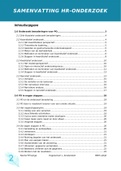Samenvatting
CMR lecture summary
Consumer Marketing Research lecture summaries. I took the course last year and all the lecture content is similar, but only in a different order. The content is the same as I went through all this year's slides as well. Combine this with my other CMR files and you're all set for the exam!
[Meer zien]












